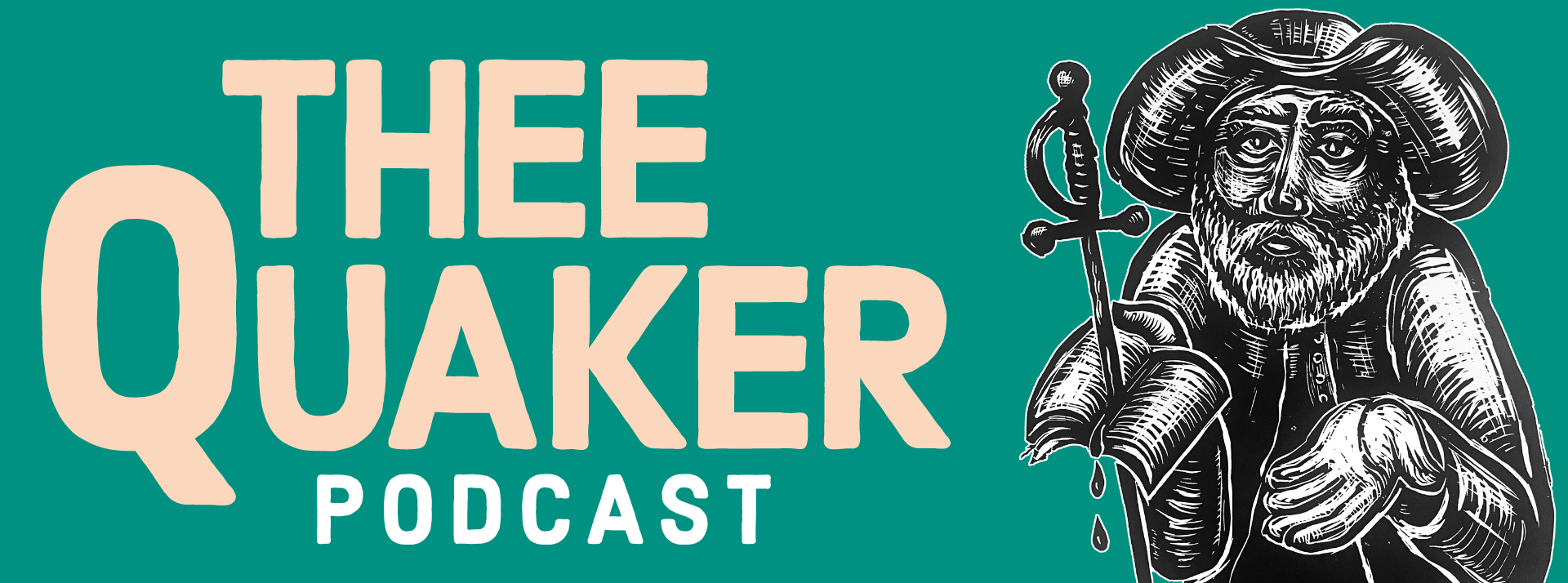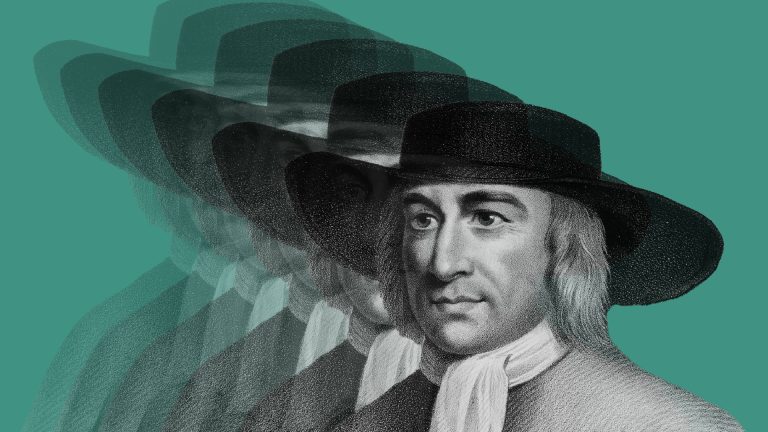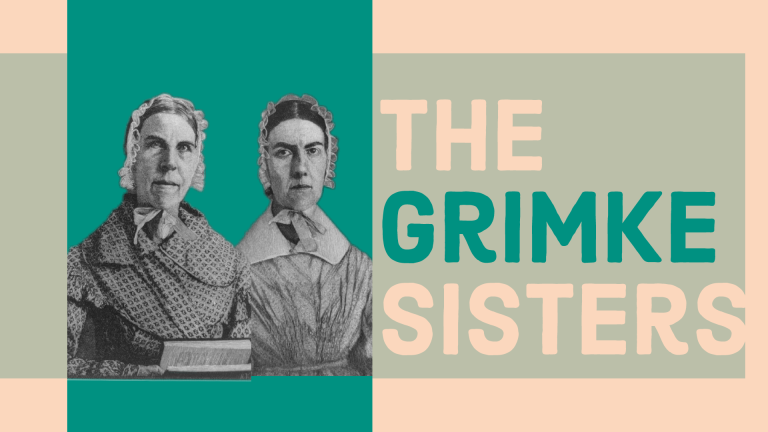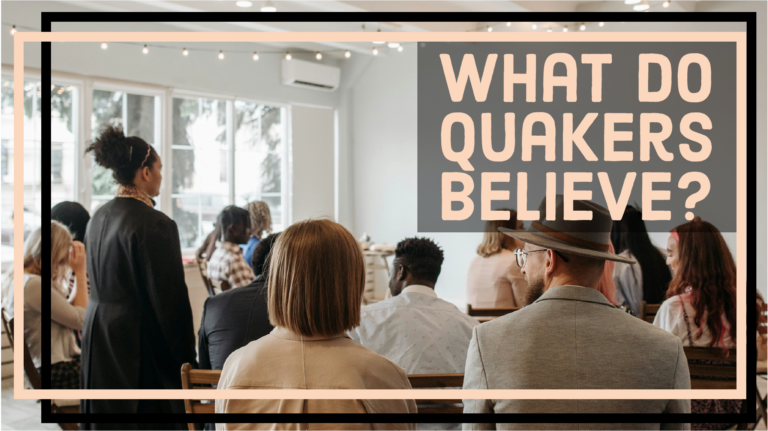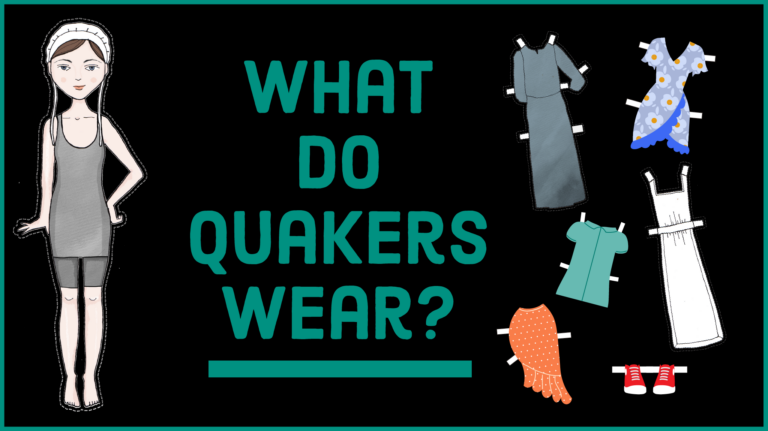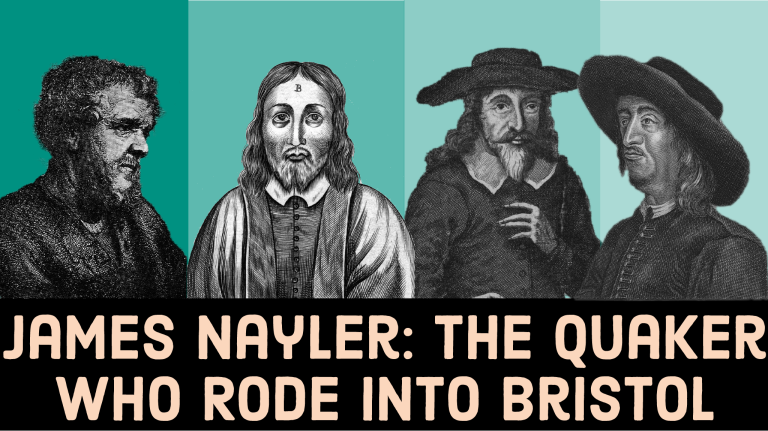A Quaker Road Trip: Touring the Quaker Scenic Byway
Thousands of Quakers left the American South in the 1800s because of their anti-slavery beliefs. And many of those Friends settled in Ohio.
On today’s episode, local historian Christine Snyder takes us on a trip along the Quaker Scenic Byway in Ohio and shares some of the remarkable stories of these Quakers — tales of daring rescues, an outspoken minister who prophesied war, and so much more.
Put on your seat belt and join us for a very Quaker road trip.
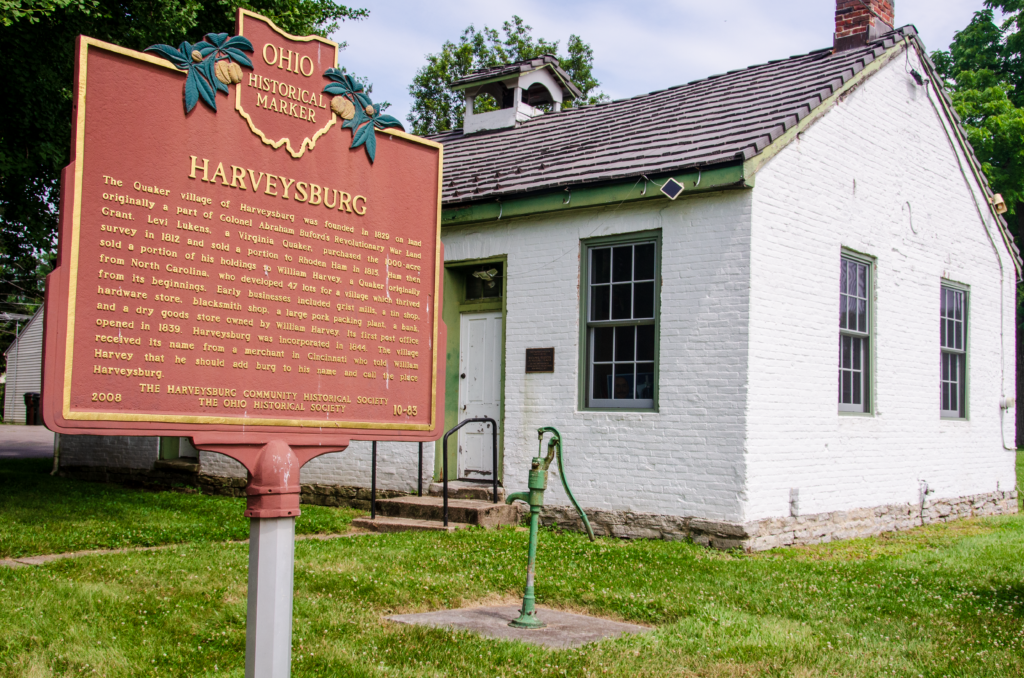
Subscribe so you don’t miss an episode!
Leave a comment below to share your stories and thoughts!
Download the transcript and discussion questions.
Discussion Questions:
- What story from today’s episode stands out to you the most? Why?
- The F/friends who created the Quaker Scenic Byway feel preserving Quaker history is vitally important. Do you agree? In what ways can learning about Quaker history enrich your faith?
Christine Snyder: There was a man running as fast as he could toward the meeting house, and he at once asked the Quakers for help. He said he was being pursued. Not far behind were men on horseback, looking for him to capture him to take him back into slavery. And just as they had feared, up the road came men on horseback.
Various: Thee Quaker Podcast. Story, spirit, sound.
Georgia: I’m Georgia Sparling.
Jon: I’m Jon Watts.
Georgia: And it is hot in the northern hemisphere
Jon: Oh man. It has been hot.
Georgia: But it’s summer here and there’s one thing I love to do during the summer….a road trip!
Jon: Nice! I mean, I’m more of a bicycle guy myself but I can get into it… What do you love about road trips?
Georgia: You can stop any time you want and explore, which is what we’ll be doing today.
A month or so ago, while I was in Ohio, I got to spend some time along the Quaker Scenic Byway, which was a real education for me.
A year ago, I certainly couldn’t have told you that there was a strong Quaker presence in Ohio, but now I know that in the 1800s thousands of Friends left the South where it was becoming increasingly dangerous for them because of their anti-slavery stance.
Jon: Right. You can basically map the movement of 18th and 19th century Quakers by following the “Wilmingtons.” Many Quakers moved from southeastern Pennsylvania to North Carolina, so Wilmington, Delaware and Wilmington, North Carolina and ended up in Wilmington, Ohio, which is the home of the scenic byway. So anyway tell us about it. What is the scenic byway?
Georgia: Well, it’s a driveable tour of Quaker sites, mostly historical, that shows the often hidden history of Quakers in this area. And it tells the story of these people who did some remarkable things, some on small scale, some on a large scale, from rescuing enslaved people to making a name for themselves on an international scale.
And it’s very official — it’s been designated by the Ohio Department of Transportation and there’s an interactive map online, so it’s this really well-thought out and well-designed Quaker experience!
Jon: Wow, that is official! I see a historic plaque every so often in Philly but as far as I know we don’t have a scenic byway. Quakerism is so much more than just its history, but as someone who loves stories and feeling connected to spiritual ancestors and shared history, I appreciate the opportunity to hear about faithful Friends of the past.
Georgia: Yeah certainly.
Jon: So ready for a road trip?
Georgia: Let’s go!
All right, our first stop today. So tell me a little bit. Where are we right now?
Christine: Well, right now we’re standing in the burial ground or the cemetery of the Springfield Friends Meeting at 121 Todd’s Fork Road, Clinton County, Ohio. And this is one of the major stops of the Quaker Scenic Byway Tour. This is a particularly interesting spot in that some of the earliest Quaker settlers in Clinton County arrived here in 1806. And the next decade or so, mostly from North Carolina.
Georgia: It’s a hot June day and I’m standing in a cemetery in southwestern Ohio with Christine Hadley Snyder, who has been my host during my stay in Ohio. We’re deep into Quaker country and today we’re sampling stops along the Quaker Scenic Byway.
Christine: It is 54 miles total in a loop, and there are 55 sites, not stops but sites. So when we put together the route, we classified the sites as places that you are going to drive by and take a look. And then other places where you can stop and get out of your car and look around and take a photo and then there are other sites where you can go in. So there is a variety of experiences.
Georgia: Christine along with the former director of the Quaker Heritage Center at Wilmington College took on much of the development of the Quaker Scenic Byway, mapping out sites, testing each location, and writing most of the descriptions on the interactive map, but the idea came from an anonymous donor who gave the Quaker Heritage Center at Wilmington College a $10,000 grant to get the project underway, although it falls under the auspices of the Ohio Department of Transportation, and is one of 28 other byways in the state. Of course, town boards, community associations, visitor bureaus, and planning commissions, among others, also contributed, but if you have a question about the byway, you ask Christine.
Christine: I’ve been Quaker all my life and grew up here. So I knew a bit of background about the history. And I was familiar with the location of the meetings. And so we started with that. And then what happened, of course, each time that we would visit a site and talk about it and say, Is this the right site? Someone would say, but have you thought about this one? Or Christine, have you ever seen this house? So our knowledge base just spread, because people would give us suggestions. And we would just learn and learn and learn and learn. So we had to put together a route that was limited to what a traveler could cover in one day, and not drive too many miles. Then we had to think of stops and facilities and restrooms, and places to have lunch, and opening hours, with lots of details. So we did the best we could to put together a route that would be a fun day trip for a family or individuals and that they can enjoy the amenities of both Wilmington, Ohio and Waynesville, Ohio.
Georgia: Today, we’re starting, as I said, with a cemetery, which, in many ways, tells the story of the arrival of Quakers to this area. The cemetery is off a country road, as are most of the sites on the byway, and it’s a big expansive space, with tall leafy trees. According to Christine, this one was designed by a gardener of a Russian tsar who had settled in the area. Overlooking the lush green space is the Springfield Friends Meeting, where Christine is a member and where generations of her family have worshiped.
Christine: The extended Harvey, Hale, and Hadley family, five brothers, two sisters, and the widowed grandmothers settled on this survey. They divided up the land and sold land to other Quakers families as well. One of the first things they did was set up their Quaker meeting.
Georgia: The meeting was established in 1809 and has gone through a few different buildings but today I want to learn about the virtual who’s who of Quaker worshippers who are represented in this cemetery.
One is Eli Harvey, who was born in 1868 and buried here in 1957. Eli was an internationally recognized painter and sculptor whose work is featured in the Smithsonian Museum of Art, the Metropolitan Museum of Art and many other places. Eli got his start right here, meeting for worship at Springfield Friends Meeting and attending school in the one-room Quaker schoolhouse.
Christine: His most famous work is animals. While he was studying in Paris, he discovered that he was particularly interested in animals, and particularly felines. But one of his really famous sculptures is the Brown bear. The mascot of Brown University in Providence, Rhode Island, a life sized grizzly bear.
Georgia: Yeah, I know it well.
I actually graduated from Brown and never who made the giant bear sculpture that’s so iconic to the campus. But Eli Harvey is not the only notable Quaker buried here. There’s also Martha Hadley, one of several ancestors of Christine who are buried here. Martha was a single woman when she traveled to a remote corner of Alaska in the 1890s,. She was a missionary and teacher who was not only embraced by the Inupiat village, but who helped to establish a Quaker meeting there that has survived for more than 100 years. She’s really fascinating so we’re going to do a whole story on her one day.
As we’re going along, Christine has stories about most of the people buried in these historic graves, including one that caught my attention of a prophet, whose widow is interred in the cemetery and who is the reason that many Quakers came to Ohio.
Georgia: Wait, prophet?
Christine: Yes, Prophet.
Georgia: Tell me about that.
Christine: Ruth Hyatt Dix was the widow of Zechariah Dix who was Quaker Prophet. Zachariah intended to come here but he did not live long enough to arrive. Zachariah Dix is the Quaker prophet in that there’s a booklet called small book called The Bush River Prophecy — Bush River, South Carolina. In the late 1700s, early 1800s Zachariah Dix was a traveling minister and traveled throughout the areas where Quakers were in into North Carolina where Quakers had settled in the 1700s.
He prophesied a bloody internecine war, whose cause would be slavery. And he told the Quakers that they should leave the south and should come to the north into the Northwest Territory, whereby the ordinance slavery was forbidden forever. And Quakers heard the prophecy and they listened and they left the south by the 1000s and came to the Northwest Territory settling mostly in southwest Ohio and Indiana. He was the impetus for the great migration of Quakers coming to the Free Territory, the frontier, the wilderness of Ohio. Yes, the Bush River Prophecy.
Georgia: Although Zechariah Dix did not live to see the end of slavery, many of the Quakers who heeded his warning found safety in Ohio and were also able to continue the work of abolition and racial equality. Which you’ll hear more about that on our next stop!
All right, stop number three.
Christine: Well, this is one of the most popular steps on the Quaker Scenic Byway, the Harveysburg Free Black School, built in 1831, founded by Elizabeth Burgess Harvey, who was the wife of Dr. Jesse Harvey.
Georgia: We’re standing in front of a small white rectangular building with a few houses nearby and a big ginkgo tree overhead.
Christine: It has an interesting architecture, as you might look at it and say, Well, that looks like a Quaker Meeting House. And it certainly does. It’s the classic rectangle, twice as wide as it is deep, the two doors and the tall windows. So it became a private home after the school closed. But then the folks here in Harveysburg saw the need to preserve it, and purchased it and restored it into what may look a lot like it did at that time.
In the early days, there were several black families in this region, families that had been helped to freedom into the north.. And Elizabeth saw that they needed an opportunity for education. And so she founded a school, particularly for free black children. So the people who attended the school were people from the neighborhood. Plus, the word got and planted, plantation owners in the South would send their half Black children north to the care of the Harveys to be educated at the Harveysburg School.
The school was founded in 1831. And it lasted until 1909.
Georgia: So that’s a long time.
Christine: It’s a long time. And so it’s it served a good purpose. And they have a festival here. It now belongs to the Harveysburg Historical Society. And at the last Fall Festival, there was a woman who attended whose grandmother had studied at this school. So the history is not that old.
Georgia: I think it’s really cool that this history has been so well preserved and cared for. And it’s really a beautiful legacy of the Quaker pursuit of equality in such a tangible way.
All right. Should we go to our next stop? All right.
After the break, we’ll learn how some clever Quaker women hid a runway slave and see the lasting impacts of a famous Quaker schism.
Liz Enge: You can cut this.
Georgia: That’s Liz Enge and in that little clip there, her husband and I were trying to convince her to go on the record and share her thoughts about the podcast.
Liz was not at all convinced that she had anything worthwhile to say. For the record, you’re about to find out that she was wrong.
So I met Liz during my recent travels to the midwest. She is a longtime member of Wilmington Friends Meeting in Wilmington, Ohio, and she’s also on their Sunshine Committee, which is their welcoming committee. And I can attest to you that she is very good at that role. But let me let Liz speak.
Liz: I was raised Catholic, and that ended up not being a good fit for me. And I was looking for something different, but really didn’t know if it was out there. I ended up attending a Quaker funeral for a work colleague, and it was just so lovely and so different. It just it really spoke to me.
Georgia: Over the course of a few years, Liz kept being reminded of Quakers. She picked up a novel and it had a Quaker character in it. One day she got lost and found herself standing in front of a Quaker museum.
Liz: And so I thought, okay, I’m gonna look into this. So I decided we would go to a number of different meetings in the area and see if any of them were a good fit because I understood that they can vary to some degree.
So we ended up coming to Wilmington Friends, and it just felt like home. And it just kept feeling like home. And over the years, we’ve made great friends, it really feels more like an extended family now. And I think why it worked so well for our family is because it’s a community. And it’s a welcoming community. And so it meets my needs. And I like that it meets other people’s needs.
Georgia: So switching gears a little bit, you said you listen to the podcast, so how did you find out about Thee Quaker?
Liz: Actually, I’m a big fan of the podcast. I’m your groupie. So Jon had come to our meeting. I became aware of it then. And I love it. And what I really love about it is that it shows people that regardless of where of where you’re at or what you’re believing, there’s probably a place for you in the Quaker community. Or even if you don’t want to be part of the Quaker community in a more formal way that the testimonies of Quakeris, I just really think that’s what the world needs right now. You know, simplicity, and integrity and peace and equality and community. What’s not to love about that, right? And if that’s all of our foundation, then think of all the beautiful things that we can do together.
Georgia: Do you have an episode that sticks out in your mind as something that’s resonated with you a lot?
Liz: I love how varied they are. I love it that you’ve talked to a Quaker farmer. I love it that you’ve highlighted meetings in Africa. I love that you talked about the history of pamphlets, you know, I I just love that you cover it all, I never know what you’re going to talk about. I try not to peek ahead of time and I just I’ve learned a lot about being Quaker and Quaker beliefs. And even though you know, this is a great community for me, I like knowing what other communities are doing. And, you know, people’s experiences and what they bring. It just makes it all so much richer. And Thee Quaker Podcast does an excellent job of, of highlighting all of that and just, you know, bringing more sunshine to the world.
Georgia: Thank you.
Liz: You’re welcome.
Georgia: It’s so wonderful to hear how Liz and other listeners have been impacted by this show — it’s a place of learning and connection for so many people and it has the potential to reach so many more. That’s why we do these segments and we ask for you, our listeners, to become podcast supporters. We want to keep the show going and growing and reaching more people who don’t know we’re out there yet. So that’s why we ask if you consider being part of this project and giving $5, 10, 15, or $20 a month? Whatever is in your budget. You can go to QuakerPodcast.com, click on Support at the Top of the page to learn more.
Thank you so much. Now back to the show.
There are a few towns along the byway, but it’s mostly rural. Many of the sites are along two-lane roads that are thick with cornfields and dotted with farmhouses.
Christine: Our community is a rural community. And both Waynesville and Wilmington are small towns, they are both historic towns, and there’s lots of farmland in between. Now, of course, our community is crossed by a huge freeway I-71. And some major highways, but much of the byway is on small country roads, driving through farmlands. That is the as part of the objective is to get people out of town and out in the countryside to enjoy the beauty of the Ohio landscape, and to visit places that are a bit remote, perhaps places that they have never seen before.
Georgia: All right, stop three,
Christine: So here we are in the the Quaker historic area of Waynesville, Ohio. This is Warren County. And sitting here looking at the white brick meetinghouse and we can see the red brick meetinghouse on the other side.
Georgia: The first meeting house is the Miami Meeting, built in 1811. Thousands of Quakers who has migrated from the South transferred their meeting membership here between 1799 and around 1840s as their anti-slavery stance became a source of hostility among their slave-owning neighbors before the American Civil War.
But the impending Civil War wasn’t the only schism on the minds of these Quakers.
Christine: In the 18, late 1820s there was a deep division in the Society of Friends in America. And it affected this meeting, this very large meeting, and the meeting split in two and so the group that was later called orthodox went back. Back across the street, back to where the original log cabin had been where they had first met next to the burial ground and built a second meetinghouse.
So here in Waynesville, we have two meeting houses, side by side, with just the street coming between them. And the cemetery was divided in two parts. So there is the Hicksite part and the Orthodox part.
It’s hard to from this distance to understand that split, but basically what happened is the group that became to be called Orthodox, which then became part of FUM, the Friends United Meeting, they did things like sing hymns and accept a pastor, a paid pastor, and then moved into programmed worship.
Very similar to the Methodists very much influenced by the Methodist while the Hicksites, so named because of the preaching of Elias Hicks, who actually visited this meetinghouse during that time, 1827-28. The Hicksites believe that they should retain more of the practices and philosophies of the early Quakers in England, the teachings of George Fox, and then the preaching of Elias Hicks, with an emphasis on simplicity, and the leading of the Spirit individually and the lack of paid ministry. So Miami Meeting here has existed for a couple of 100 years, and they’ve never had a pastor.
Georgia: I can’t imagine going to meeting every week, kind of seeing the other, the other half on the other side of the road. And like how that I mean, just the reminder, the constant reminder of the conflict.
Christine: Well, there were some families where they would all ride to meeting in their carriage. And then some of the family members would go into the red brick and some of the family members would go into the white brick.
Georgia: Even though it was I mean, obviously contentious enough that they split into what did they still get along? Okay.
Christine: Yes, they lived in the same town and they were part of the same community.
Georgia: That may be something unique to Quakers, to be able to still get along really well after kind of a pretty big theological split.
Many years ago, I was at a women’s retreat and the speaker said something to us that I haven’t been able to forget — she said people in the Bible were constantly in transition and so we should expect that we’ll always be in some form of transition. I can certainly see that in the lives of the Quakers who settled here in Ohio — a transition from the South to the Midwest, from a theologically united meeting, to a major schism, and our next stop represents a geographical change.
Back in the 1970s, Caesar Creek Lake was dammed, flooding thousands of acres of land, displacing some 300 people, including a Quaker meeting.
Georgia: Ok. Stop four
Christine: So we’ve arrived at the Caesars Creek Pioneer Village. It’s a collection of old houses and buildings made of logs. When the lake was being constructed, some old structures were discovered and a group formed to salvage and improve the structures and move other structures that were found in the community to one place.
Georgia: The Pioneer Village Park is uninhabited except for festivals, but it’s open to walk through any time and lies along a local trail. There are a dozen or more old buildings situated in a circle around a green and it’s not hard to imagine women with bonnets and long skirts coming out of their homes or cows grazing in the paddock out front.
Christine: So many of the preserved or relocated log buildings were built by early Quaker settlers in the Waynesville area. One of the buildings that was brought here is Caesars Creek Friends Meetinghouse. Caesars Creek Friends meetinghouse was established in 1805 and the meetinghouse, this one was built in 1849 on a bluff above the West Bank of the Caesars Creek Gorge. And then due to the building of the lake, the meeting closed in 1967. In 1975, the meetinghouse was moved over 15 miles of road to the Pioneer Village Park, and it was put on a new foundation, and it serves as part of the outdoor museum.
Georgia: With the removal of the meeting and the flooding of the land, the Caesars Creek Friends mostly moved elsewhere, says Christine, but with the preservation of the meetinghouse, their history lives on.
Christine: There’s a story that goes with the Caesars Creek meetinghouse. That is an interesting one to think about.
Georgia: One Sunday in the 1850s as the Friends gathered for worship, someone saw a Black man running for his life toward the meetinghouse. Although slavery was not legal in Ohio, it was still legal for slave owners to pursue runways and this man had obviously done just that.
Christine: And he at once asked the Quakers for help. He said he was being pursued. Not far behind were men on horseback, looking for him to capture him to take him back into slavery. And he asked for help. Well, the Quakers at that moment were gathering, seating themselves on the benches, the facing benches on one side and seated on the facing benches where the elders who were women who at that time were wearing dresses, with very full, long skirts. So the fugitive was invited into the meetinghouse. The women indicated to the fugitive to crawl under the bench on the facing bench. And they all sat close together and spread their full skirts out.
A few of the men chose to stay outside at the doorway. And just as they had feared, up the road came, man on horseback. They rode up to the meetinghouse, jumped off, went up to the Friends who were standing there and said, Has any slave gone passed by here this morning? And the Friends answered, “No slave has passed by our door today.”
So, you are thinking, were they telling the truth? Because Friends were very careful about speaking the truth. And the truth was that no slave had passed by their door that day, because he was still in the meetinghouse. And they kept him there until they felt they could take him to a place of safety. And then move him on on the Underground Railroad, northward to freedom.
Georgia: This is just a great story of how these Quakers put their faith into action with some quick thinking and creativity. I mean I would love to know the thoughts of these women as they’re sheltering this man under their dresses during what was supposed to be just a regular Sunday meeting for worship.
Ok but it was hot out there, so it was time for us to get back in the car and head to our final stop and it’s one that special significance for Christine.
Georgia: All right, last stop.
Is this your room?
Christine: It was when we were little girls. They were four little girls in the family. They were to double beds. And my oldest sister and youngest sister slept in this bed. And my next sister and myself stepped in this bed. And we had one small closet…
Georgia: For our last stop, we’re at Christine’s childhood home, which is still in the family. It’s one of the places on the byway that is not generally open to the public, though it is available as an AirBnB.
Christine: My father bought the house in 1935, when he was a young farmer, hoping to start his own farm and find a wife. So my parents were married in 1937. And began their life here on their wedding day, on their wedding night, and lived here for 53 years, and raised a family of five children, four daughters and one son.
Georgia: The house has been Quaker since the first cornerstone was laid.
Christine: This Eli Harvey…
Georgia: Not the artist
Christine: Who built this house was three years his old when he came in a covered wagon, across the mountains through the Cumberland Gap, traveling with a large group of Quaker families and neighbors from North Carolina, to settle in what’s now Clinton County, Ohio. Eli grew up, married and bought land from his father for this farm and built the house. The house is dated at 1830 or 1832.
Georgia: The house is on the National Register of Historic Places and it’s full of details that give a clue as to the simplicity of Quaker living — the rooms are modest and practical adorned with handmade details. There are quilts on display as well as dresses that belonged to Christine’s forebears, and there’s even ledgers written in meticulous script that give a clue as to the day to day transactions of a farming family. The house itself is surrounded by cornfields with a barn out back and a front porch is perfect for watching the sunset.
Why should people stop at this house along the byway?
Christine: So it has a charm to it. That that is lovely. People like to just come and be here.
There are so few of the original houses and barns left, that we’ve taken upon ourselves, my husband and I as a project to maintain this place, as well as we can while we’re still here.
Georgia: There is an astounding abundance of Quaker history in this corner of the country, and the Quaker Scenic Byway is helping to preserve it for future generations. Keeping that history alive is something about which Christine is intensely passionate.
Why is this scenic? The Quakers Scenic Byway important? Why? Yeah,
Christine: Well, we are not a very visible presence anymore in the places where Quakers settled in large numbers in the early 1800s. So this gave us an opportunity to bring attention to some historic sites that are in danger of being forgotten about or being abandoned. And to also remind the community of its own history. And then to invite tourists from outside to learn a little bit more about the Quaker influence in southwest Ohio.
Georgia: The project, which started with an anonymous grant in 2010 took almost 12 years to complete but…
Christine: It’s finished, it’s ready to follow and it’s beautiful.
Georgia: Thank you for listening and thank you to Christine Snyder for taking us on this tour. If you’re interested in the Quaker Scenic Byway, I do encourage you to go for a visit. There are lots of Quaker meetings to check out (including one that we’ll feature in next week’s episode) and this area is a reasonably short drive from several Ohio cities. I’ve provided a link to the byway website on our episode page at QuakerPodcast.com.
This episode was reported, written, and edited by me, Georgia Sparling. Jon Watts, co-hosted and wrote and performed the music. Studio D mixed the episode. Your moment of Quaker Zen will be read by Grace Gonglewski.
If you like what you hear, please consider becoming a Podcast supporter — you can do that on a monthly or a yearly basis. Head to QuakerPodcast.com and click on Support to learn more.
And now for your moment of Quaker Zen.
Grace Gonglewski: Elizabeth Gray Vining, 1970. [Minor ecstacies are] bits of star dust which are for all of us, however limited our opportunities. […] Something seen, something heard, something felt, flashes upon one with a bright freshness, and the heart, tired and sick or sad or merely indifferent, stirs and lifts in answer. Exercising our faculty for minor ecstacies may actually increase the number of them we feel.
Sign up for daily or weekly Quaker wisdom to accompany you on your spiritual path, just go to DailyQuaker.com. That’s DailyQuaker.com.
Recorded, written, and edited by Georgia Sparling. Co-hosted by Jon Watts.
Original music and sound design by Jon Watts (Listen to more of Jon’s music here.)
Mixed and mastered by Studio D.
Supported by listeners like you (thank you!!)
Referenced in this episode:
- Learn more about the Quaker Scenic Byway.
